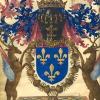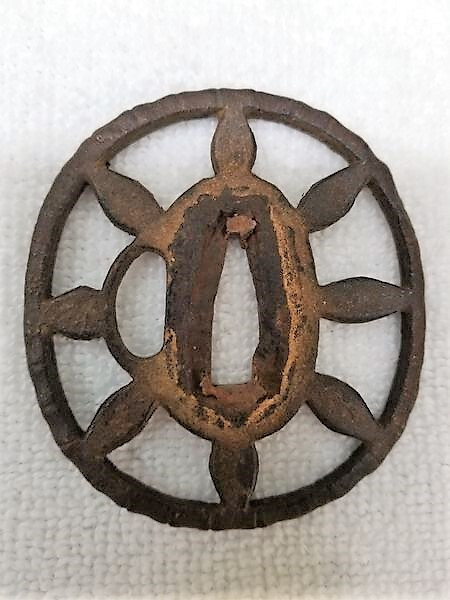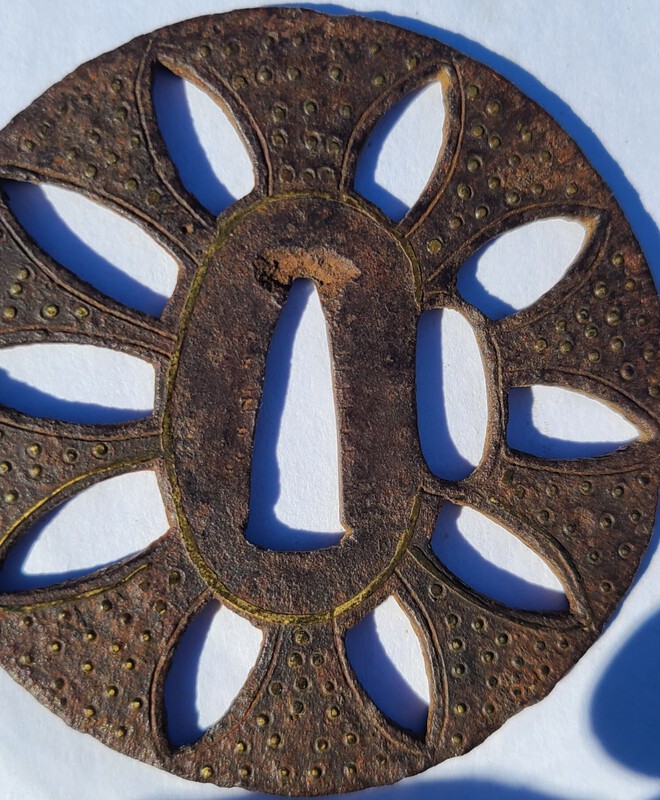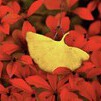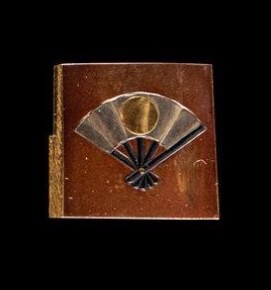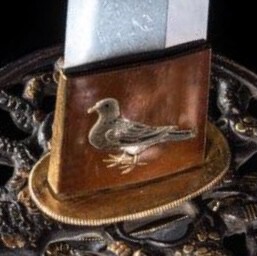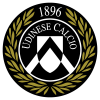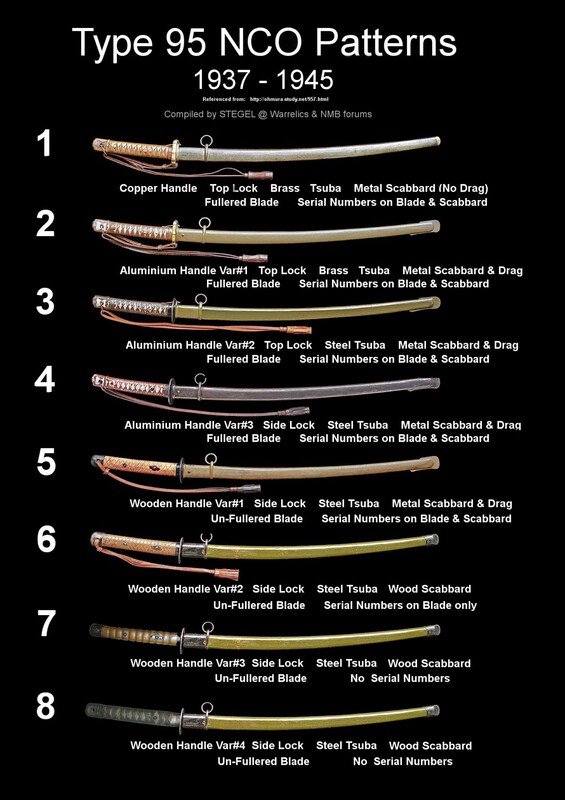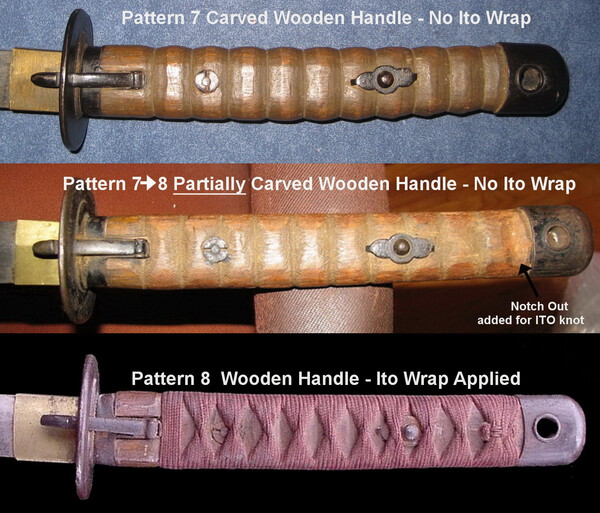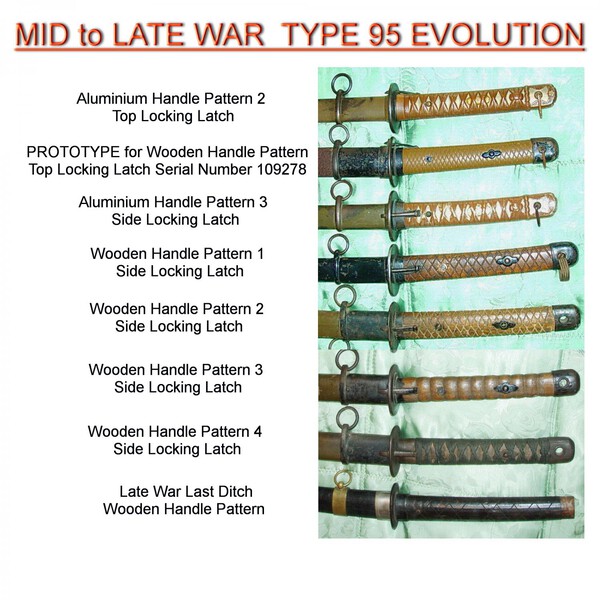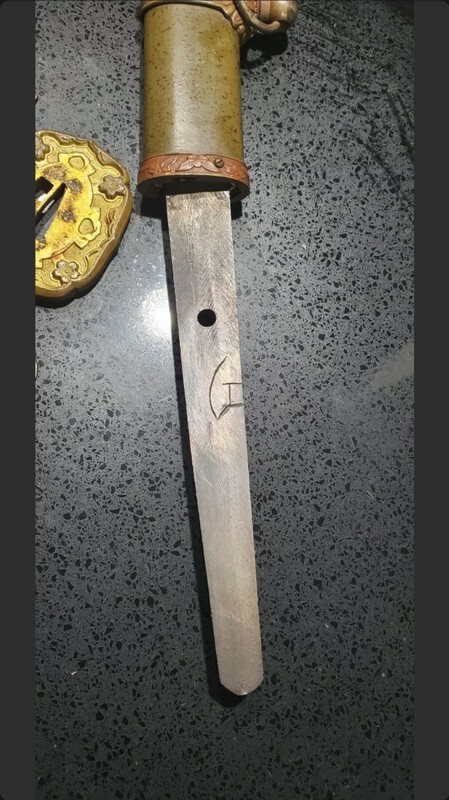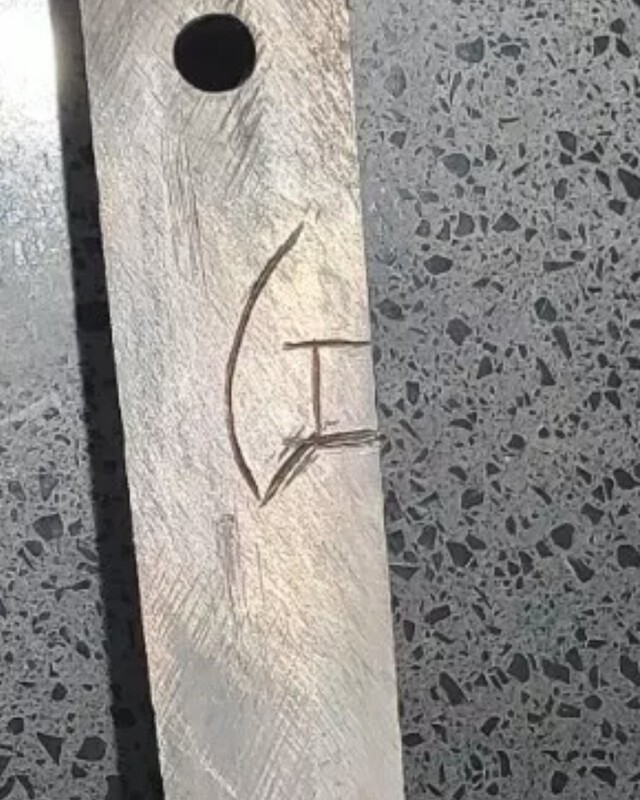Leaderboard
Popular Content
Showing content with the highest reputation on 09/25/2021 in all areas
-
Hi Matthew, Thanks for the fast response & willingness to provide additional images w/o hesitation. Appreciate that you went an extra mile to absorbed the little additional cost of using FedEx cos the local post is unable to deliver due to whatever reasons. Best regards, Ed2 points
-
I'm happy to take Brian's suggestion and report back on my experience. Bought this very interesting tsuba from Ron. It is a very rare and early Uchigatana tsuba of the Muromachi period, and is in very good condition for its age. Early pieces of this time are extremely rare and I am of course very excited. The communication with Ron was very good and the shipping was very fast and professional. Summa Summarum - I am very satisfied! Thank you Ron! Christian2 points
-
Someone over at Warrelics was very pleased with some work done by Ralph "rbminis", just to add another source for fabricated parts: https://www.warrelics.eu/forum/f216/Japanese-police-short-sword-meji-period-796263-post2178595/#post21785952 points
-
I have had Don Schlickman make some tiny screws for me and he does excellent work! Thank you for posting this, I have tried to recall his name a couple of times, recently, as guys ask for parts; but hadn't been able to drag his name out of my memory banks!2 points
-
The bright brass was when the tsuba was angled towards sun; the dim was taken indoors. Took more pictures, but my computer occasionally insists I have insufficient memory when I download pictures that i emailed to myself from my cellphone, and will not display them. In any event, I like this one; it would really be nice if it is not just a later period copy of an onin tsuba, so commentary either way will be welcome. 7.7x7.6 cm, .33 cm thick rim and .25 cm thick in the seppadai. John Twineham1 point
-
1 point
-
1 point
-
Durrell, that's a Gifu stamp. Found your photos of the mei and date (Kanekage, 1944). Thanks!1 point
-
Hi Durrell, Kanekage. 19th year of Showa (1944) The month is obscure though.1 point
-
1 point
-
I recently saw a set of fittings with instructions on the order of how they should be assembled written on them in Japanese. Ikea labels A,B,C, etc. would help? [Ikea - sounds vaguely Japanese!]1 point
-
Hi Jose, I believe this possibly was made as is or, more likely, fashioned from a broken sword tip with the horimono added, done shortly after WWII to sell to someone in the occupation as a trinket to take home. Grey1 point
-
Another frame of reference… look at end bids for the bid items and add the 25% premium. Then consider papers/polish/etc. Add it all up. Now go look at the 2 blades Ray just posted in the For Sale section here to see what $$$ can buy for papered/polished blades. I know this all is IMHO… but I think there were a lot of treasure hunters at the auction. I do hope their speculation was correct… for their sake. And none of this is a slam at any of the buyers at the auction… or an advertisement for Ray. I just am promoting the wonderful opportunity we all have to be a part of the NMB community. Not everyone is so lucky.1 point
-
I had the chance to go preview several of the blades as I live near Chicago. I was interested and bid on 4 of the items, but won nothing as there were people MUCH more interested than I. I recently made another purchase so funds were limited and I wasn’t serious about chasing anything. My overall impression of the ending bids vs what I saw in hand leads me want to stick with the Chicago Sword Show and dealers here at the NMB. There is a lot of money flying around out there and some items I just did not understand how they ended where they did… but each to their own. I looked at the Norishige and I am nowhere even close to qualified to even make a wild-ass guess about such a blade/gakumei. From the machi to about half way up the blade, it almost had a Mino-like hamon feel to it, and then the rest of the way to the kissaki was more Norishige-like based on what I found on line. The koshirae was nice and solid and someone spent a good sum on that habaki. A blade like that and you would want someone like Darcy to chime in. Either someone got the deal of a lifetime or is gonna be awful disappointed. And to think a Norishige is ‘floating around under the radar’ seems rather implausible. I also looked at the Sadamune and the Rai Kuniyoshi. Once again, two names out of my league. The Sadamune’s nakago looked off… almost ‘muddy’??? Is that normal to age like that? I’ve seen it a couple other times and it always makes me think something is wrong? It may be just my novice inexperience. The Rai Kuniyoshi had some condition issues, the mei I have no idea if good, and the mei placed ABOVE the mekugi-ana threw me. But once again, what do I know. Blades I was interested in resided a little more in the ‘conservative’ section of collecting: 650 - Kikumon Iga no Kami Kinmichi katana: I thought it a solid blade but the mount was ‘meh’. The Kaneiye tsuba was in questionable condition. 662 - Bushu Terushige Wakizashi: was in good condition, but I was least serious about this blade. Would only have bit if it was a steal. 666 - Yamato Masanori Wakizashi: was in pretty good condition and the koshirae was solid. It looked like a pretty nice set, and I almost kept bidding… but then I kept adding in the buyers premium and I just couldn’t do it. Once again, limited funds. 676 - Kaneyoshi tanto: Wasn’t sure about mei, but there was some nice activity and koshirae was very solid.1 point
-
My auto renewal notified me last week for membership, hopefully people have been keeping up with that too.1 point
-
Michael, It cleaned up well without the heat gun. My concern was any wax that may have settled in tiny crevices. At 140 the wax instantly evaporates. Best, James1 point
-
All, This update has been a long time coming. I wanted to be able to give things time in order to provide an accurate and comprehensive review. 1. After years of display the only thing I have had to do is give the wax a quick swipe with the microdear to enhance the shine. There has been no clumping. There have been times when the wax has ever so slightly hazed, but those were only on blades in areas without dedicated climate controlled cases. 2. I recently removed and reapplied the wax. I do not think this was even necessary, but I was curious about how hard it would be to remove after sitting. The process I used was to wipe the blades with denatured alcohol. I then used a heat gun set to 140 to quickly pass over the blade followed by another wipe down. It removed 100% of the wax. 3. As to protection, I had tools rust in the same area I had some of the treated blades displayed. There was absolutely no corrosion on the treated blades at all. If I receive enough requests, I will make a video on the application and removal. Best, James1 point
-
Most likely the number 六三. Check the fittings to see if they have a subassembly number that matches. 六三 = 63.1 point
-
1 point
-
If faithfully reproduced to the same level of quality, small items like this are invaluable to collectors. Items like these Type 95 screws, the special Type 3 pins and the small screws used for Saya parts on standard officer swords are difficult and expensive to obtain now.1 point
-
1 point
-
I think that by that time this forum has been archived and will (still), be regarded as thé number one source of information regarding real and fake swords and a statue of Brian made in memorial.1 point
-
The Car is the "Magnolia Special". I built her from scratch, and she now lives on the second floor of building that I also built from scratch. Check it out, thanks for asking! Brian - Apologies for getting off topic.-- JT1 point
-
Hi Mr Williams (Bruce W), You can call me Stegel, where i grew up, everyone called each other by nickname or surname, so first names were rarely used, no big deal as i’ll know when i’m addressed! Now, forgive me for winding back this thread to your post #26, wow, lots of questions etc, i prefer less in posts, but anyway here goes.... my responses are in red font. WilBru5 #26 Posted 06 December 2019 - 07:01 PM Thank you Trystan your pattern 5s are continuing to reinforce my thoughts. which are: Jinsin Arsenal Heijo factory did not make any pattern 1 through pattern 5 type 95 NCO swords, or the corresponding koshirae & saya of those swords. If you base this upon having seen further examples yourself, then i can confirm with my data that this is essentially correct. There are however, a very few pattern 5’s with 3digit serial numbers on the scabbards and what appears to be the same on the blade (appearing to having the serial number ground away leaving the last 3 digits) See Trystan’s post #25. I’m guessing they may have been samples or parts of the Pattern 5 sent to Jinsen possibly assembled or modified by them prior to gearing up for production of the Pattern 6. All have Seki inspection stamps and no Jinsen acceptance stamps as seen previously on Tokyo swords.All have steel scabbards. All pattern 6 & pattern 8 with original koshirae & saya are easily identifiable by their less refined, (cruder) construction. All pattern 6 & pattern 8 original saya will be as easily identifiable by their construction, (metal parts originally painted black and wood originally painted green). I agree in principle, however it should be noted that quality continued to deteriorate with the metal used in scabbards and variations in paint colour do exist. All pattern 6 & pattern 8 , and their original corresponding koshirae and saya, will bare the Jinsin Arsenal Heijo Factory stamp. All pattern 6 & 8 were made by/for the Jinsin Arsenal and were not made by/for any other Imperial Japan Arsenal,(and will therefore not bare any other arsenal stamp as the maker). To date after recording numerous examples over the last 20 years or so, i would tend to also agree with this thought. Since I am already out on the limb, I'm going to go a little bit further; The pattern 5 and the pattern 6 are essentially the same pattern,(the 5 being more refined better construction than the 6) having different saya and coming from different Arsenal makers. Handles are also different patterns of knurling (cross hatching)Pattern 5 is Nagoya, Pattern 6 is Jinsen with the possible examples mentioned earlier( a very small sample) Note- patterns 6/7/8 all have He stampings from my observations. So; I am betting, apon further study, Shamsy will need to expand his pattern list to include another pattern... a "less refined" construction ringed handle with a wooden saya, and it will bare the Jinsin Arsenal Heijo factory stamp,(just wild speculation here). Or maybe The Jinsin Arsenal Heijo factory didn't make any pattern 7?? The Pattern List you’re referring to was something i introduced some years back, to simplify the referencing of T95’s as per the long winded labelling still currently being used.-i.e early/mid/late/copper/aluminium/wooden/brass/steel/var2A -dawson’s etc . You incorrectly assume it needs to be expanded, as it already does include Pattern 7(....the one in between 6 and 8 Lol -no offence meant!) Here’s a rough draft you can look at: While I am this far out on the limb... I don't believe there will be a pattern 8 with original saya found which will not bare the Jinsin arsenal Heijo factory stamp... As I am speculating ALL pattern 8 were made soley by/for the Jinsin Arsenal. I believe your speculation here, as it mirrors all my observations to date. And since I am merrily wondering down this path; "why is the pattern 8 tsuka ito wrapped?? The pattern 8 is supposedly the very last version... the last ditch, when all materials and time was in short supply... And yet, the pattern 8 uses more valuable supplies than the pattern 5,6, & 7. Plus the tsuka of the patterns 6. & 7 were already being made, and we can see an obvious decline in quality... so why try to improve the quality of the pattern 8 by taking the extra time and supplies to wrap the tsuka?? OK this is a fair question, and as it’s essentially directed at my Pattern list, so i’ll attempt to explain why i placed it last in the order it is. From your earlier posts, i note that our backgrounds are not too dissimilar, although not decades, a good part of my early working life was engineering based in a factory environment, both production and later development. However, this has no bearing on the topic here, other than to hopefully explain why i have come to the conclusion i have, be it correct or not. Like most collectors, i have a copy of Dawson’s book, and read his take on the last two ‘Late war’ variants. My interpretation differs in that i think both variants were intended for NCO use.(This is not to say anyone is wrong mind you- both are plausible) So then from a purely production based point of view, taking Time as the most crucial element to meet the demands of supply, i considered the ringed handle to precede the ito wrapped one. Instead of fully carving the handle, a quick partial carving, followed by a basic ito wrap (no same/filler paper involved) and i believe you can churn these out at an even faster pace. This is where we differ, unlike you,i believe it would be a time saving effort. Yes, ito wrap is extra material, however i believe it is not as big an issue as it might appear. The end result is what i believe most personnel would want.... a handle that looks more like the officers versions. At this late date in the war when the Jinsin Arsenal Heijo factory began producing swords, I am guessing was necessity due to lack of supplies and support from main land Japan. I think it plausible just as necessity dictated the Jinsin Arsenal Jeijo factory produce their version of the type 95 NCO sword,(pattern 6 and a possible ringed handle variation), necessity also dictated they produce their version of the contingency( B substitute) variation of the type 98 officer's sword... That being what we are calling the pattern 8. I disagree with you here, the contingency pattern for the T98, already existed...NLF/Pattern44/type 3/Rinji/Type 0. They also produced the various patterns of Rinji for officers, one of which Neil has already shown...(Dawson covers this in Ch14 of his book). (reposted for convenience) Jim Dawson's description in his book referred to this variation as variation #4. And in his description he postulated as to whether these were intended for officer use. I think it is plausible. Correct, in his very last sentence, he speculated, and i quote “the presence of handle tape may reveal that these swords were intended for officer use”. Nothing else is mentioned or expanded on this speculation. I admit it is plausible. Now your speculation, (also plausible) builds upon Dawson’s speculative sentence, to extrapolate even further...that is: Assumed officer use and concurrent production with the pattern 7. Whatever the chances are of this being the actual case, i do not agree, as i cannot see anything to lead me to your same conclusion. (mind you 1 in a million and you can still win the lotto draw) I think it is plausible the sword we are referring to as a pattern 8 has been mischaracterized... I think it plausible the Jinsin Arsenal Heijo factory began producing "at the same time" their versions of "both" the type 95 NCO sword and the contingency variation of the type 98 Officer's sword. This would account for additional effort and supplies applied to the pattern 8. Also; NCO swords were issue items, thus the numbered blades of the pattern 6 being the norm. But Officers had to buy their uniform accompaniment, thus the reason almost all pattern 8 sword blades are not numbered,(no need for inventory control). Just being silly here, but as both patterns do not have serial numbers on blade or scabbard... you could take this further, if you like and conclude, that the pattern 7 was also intended for officer use ??, why not?? I admit at this time I have no hard evidence to base this on. So I offer these thoughts up for open discussion... prove it right or wrong with verifiable evidence. Or just perhaps debate it out, presenting alternative views and interpretations, until more evidence is discovered. Here’s an old draft i made up a few years back to show the mid to late war progression as i see it. I'm of the belief that the Type 95 gunto consists of Patterns 1 to 8 inclusive. What i call 'Last Ditch' is the very "Spartan"- also wood handled, with cross hatching version, as can be seen at the bottom. Not all will / need agree with me, but I'm happy to discuss further, time permitting of course. Stegel1 point
-
Dear John, Yes, Kajihara did use the words Boo Utsuri, ... and I upon making inquiry of others in this regard was advised that a better term would have been Tobiyaki in long straight pattern almost giving the appearance of utsuri. I should have made an inquiry directly to Mr. Kajihara but alas I did not. ... Ron Watson Dear Jacques, I note you have edited your original comments to remove the word " Gimei ", .... a word I note you use somewhat flippantly ( my opinion not that you would care ). I also note you have removed your translation of the Kanji for Izu being in reality Iga in your opinion. I also noted your statement that Mishina School never used utsuri, .... and I have answered this with : a better term would have been Tobiyaki in my resonse to John. Now then as far as the signature and authenticity go, ... I should like to quote a letter from the late Cary Condell ..... " In response to your inquiry, the oshigata that you sent to me is indeed ( Kikumon ) Izu no Kami Fujiwara Kinmichi. That is a rare specimen. According to the Meikan IZU no Kami is the brother of the nidai ( 2nd gen. ) IGA no Kami. The page you zeroxed from Fujishiros' Nihon Toko Jiten page 392 shows an example of a joint work ( gassaku ) of the two brothers with the IGA no KAMI mei ( senior brother) on the omote and the IZU no KAMI ( junior ) on the ura. Your oshigata shows a mei with slight differences with the one displayed in Fujishiro ( look carefully at the KIN & MICHI ). It is unlikely to be fake however. It looks to be closer in feeling to the way the shodai signed. Perhaps the sword you have was made earlier in his career. " Now, ... in addition I should like to quote a letter dated August 10, 1992 from the NBTHK : " As you are already aware, there is very little information on Izu-no-kami Kinmichi besides what is already known to you. He seems to have produced very few swords under his name. It is likely that there are few false works attributed to this smith. " The sword was subsequently examined by Kotoken Kajihara who issued the Shinsa paper in 1994 stating GENUINE work by : Kikumon IZU no Kami Fujiwara Kinmichi. In personal communication he felt the work in this case surpassed that of the nidai. I do not mind constructive criticism, .... but I bloody do mind your elitist tone ( attitude ) , and rash statements which you then edit out after a goodly number of our readers have read your original without so much as : " I may have erred ! " I think given the evidence that I have presented, ... that the sword is not only genuine but a worthy study piece. ... Ron Watson1 point
-
0 points
-
Stand out. Check. Reward. Check. Larger feoff. Check. Now we’re getting the hang of things!0 points
-
During the war, I'm pretty sure Emura didn't have any significant reputation and no-one would have faked his signature. This must have been long after the war. Even a student wouldn't sign like this. This is just fantasy.0 points
-
You have to be willing to acknowledge that even a swordsmith might go to work with a few too many under his belt, every now and then! Heck, this might have been the night his wife left him for another man!0 points
-
0 points
-
500 years from now, they'll look at this and still be shocked at how awful the forger was0 points




